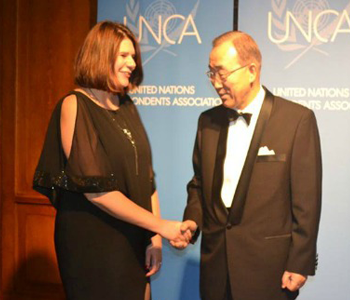
by Maryanne W. Waweru | May 13, 2015 | 2015, Babies, Breastfeeding, Child Care, Childhood Illnesses, Health, Kenya, World Motherhood
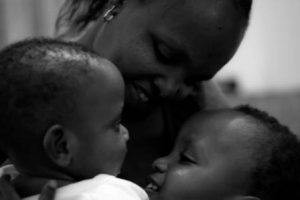 Exclusive breastfeeding. Before I became a mother, I had never heard of it. I knew about breastfeeding, obviously, but not until I was seven months pregnant with my first child, did I learn it was possible to feed a baby only breastmilk for six months.
Exclusive breastfeeding. Before I became a mother, I had never heard of it. I knew about breastfeeding, obviously, but not until I was seven months pregnant with my first child, did I learn it was possible to feed a baby only breastmilk for six months.
Most mothers I knew began complementary feeding with porridge and fruits around three months–which often coincided with their return to work after their 90-day maternity leave. Many mothers in rural areas offered their babies cow’s milk or porridge by two months. Certainly, almost all babies I knew were, by four months, happily indulging in fruits and porridge — regardless of whether they were breastfeeding, taking cow’s milk, or for the privileged few, drinking formula.
Could a child survive without even a drop of water? Impossible, I thought. Insane, actually. And even if it were possible, I imagined that the child would suffer from a nutritional deficiency of some sort. But, there was a mother and child on a television news program who appeared to prove me wrong.
I was confused as I listened to that mother and scrutinized her baby. He seemed to be the epitome of good health. He did not look famished or ‘deficient’ in any way. He was healthy to a fault. According to his mother, he hardly fell ill, not even with a common cold.
This mother encouraged new moms to breastfeed exclusively for six months. She was a career mother and had managed to do so. Interesting, I thought, especially because I knew I would be a working mother myself.
Included in the news segment were a peditrician and a nutritionist, both of whom affirmed that breastmilk only was best for baby for the first six months. They said breastmilk contained all the nutritional components needed for a baby’s growth for the first six months.
These people had to be kidding. Even professionals were in agreement with this woman?
I decided that additional research was necessary. I Googled and Googled and Googled some more. It was unanimous: breast milk is best. I began thinking that I would give it a try.
By the time my son arrived two months later in April 2011, I was sold. I exclusively breast fed him for six months, even after I returned to full-time work when he was three months old. I carried a breast pump to work, and expressed milk over my lunch hour. It was the first time my decade-old company had received a request for space to pump. The storeroom, filled with old newspapers, was the best they could offer me.
Suffice it to say that I also managed to exclusively breastfeed my second son, born in April, 2013.
The benefits of exclusive breastfeeding have been well worth it. My sons don’t fall ill often. We saved a significant amount of money because we didn’t have to buy formula, which I would have done if I had not succeeded in exclusively breastfeeding them both. Today, I use all channels within my disposal to campaign for exlusive breastfeeding because I believe it is the best start a mother can give her child.
Just the other day, I was happy to learn that the exclusive breastfeeding rates in Kenya have gone up from 32% six years ago to 61%. Meaning that I and all the other mothers I have managed to inspire through my blog and other advocacy campaigns are among the counted! Yaaaay! That has been the greatest news I have heard in a long while.
Higher rates of exclusive breastfeeding mean that more children get to survive their infancy, fall ill less often, and get to celebrate their first birthdays.
I believe that giving a child a healthy start to life through a good nutritional foundation is one of the best gifts you can offer your child. My sons appear to agree!
Is exclusive breastfeeding common where you live?
This is a post original to World Moms Blog by Maryanne W. Waweru of Mummy Tales in Kenya. Photo credit to the author.
Maryanne W. Waweru, a mother of two boys, writes for a living. She lives in Nairobi, Kenya with her family. Maryanne, a Christian who is passionate about telling stories, hopes blogging will be a good way for her to engage in her foremost passion as she spreads the message of hope and faith through her own experiences and those of other women, children, mums and dads. She can be found at Mummy Tales.
More Posts - Website
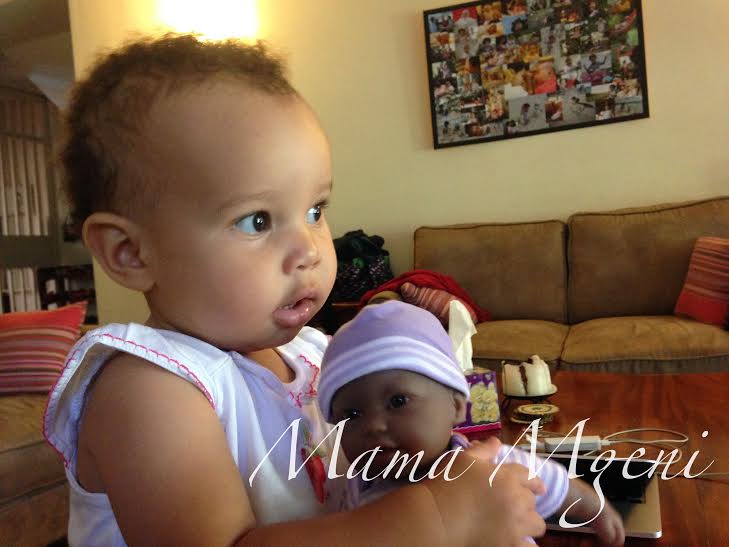
by Tara Wambugu | Mar 25, 2015 | 2015, Africa, Body Image, Guest Post, Identity, Kenya, Kids, Race, Tara Wambugu, Toys, World Motherhood, Younger Children
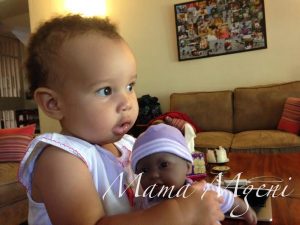
Today we welcome a guest post from Tara, who is writing from Kenya. You can follow her adventures in parenting at mamamgeni.com, where she blogs about raising her family with one foot in the expat world and the other firmly planted in her husband’s homeland. As she recently discovered, finding a black doll was no easy task–in either place.
“Mommy, there are three black people and one white person in our family.” My eldest daughter enjoys pointing out the obvious. She’s referring to me (white American), my husband (black Kenyan), and her baby sister (mixed-race, just like she is). She fully identifies as black, and has recently been expressing interest in race and skin color. We want our kids to explore their cultural and racial identities, and we try to ensure our toys and books reflect the richness of both of our cultures.
My youngest recently turned one, and we decided to get her a baby doll for her birthday. More specifically, we wanted to get her a black baby doll. Should be easy, right? We live in Kenya. No, not easy. THERE ARE ALMOST NO BLACK DOLLS HERE. Whenever you see Kenyan kids playing with dolls, they are almost always little white dolls with blonde hair. White baby dolls, white Barbies, white, white, white. You can find some nice black dolls handmade out of cloth, but they tend to be mommy dolls with babies on their backs. I was looking for a realistic baby, something she could cuddle and take care of, a baby of her own.
Since I was having no luck finding what I was looking for in Kenya, I decided to look for a black baby doll while I was in the US on a recent visit. My family lives in a greater metro area that is over 50% African American. I went to a local department store, and sought out the doll section. I expected to see a choice of dolls from different ethnicities (at least black and white dolls, given the racial make-up of the city). I was wrong – there was nothing but white dolls. Row upon row of white dolls. Blonde-haired, blue-eyed white dolls. Dozens of pink boxes with white dolls inside. Not the kind of dolls I was looking for.
Why was this so hard?
In the end, I decided to search online for a black baby doll, and found one that I loved. My daughter loves it too… She walks around the house, patting her baby’s back, swaying back and forth with a big grin on her face. I had some Kenyan colleagues at my house recently, and they asked where I had found our black doll. I told them my story, and together we lamented the fact that there were so few black dolls available in a predominantly black country.
There is a market for this kind of toy here, and someone is missing out on a serious business opportunity!
It is really important to me that my children have dolls and books that reflect who they are. My eldest is always looking for people who have skin like hers, or hair like hers.
She yearns to identify with a group of people. Having black baby dolls and books featuring black characters makes a difference. Dolls may be “just toys,” but they can mean so much more to a young girl who longs to connect and identify with others like her. What are dolls like in the country where you live? Do they reflect how the people look, or are they different in any way?
This is an original post to World Moms Blog by Mama Mgeni of Kenya.
Photo credit to Mama Mgeni.
Tara Wambugu is a wife, a mother of two, and a Kenya-based lifestyle blogger covering parenting, family life, travel, and more. A former aid worker, Tara has worked in various countries in Europe, Central Asia, Africa, and Central America. She is now a stay-at-home mom living in Nairobi with her husband and their two sassy little girls. You can follow Tara and her family’s adventures on her blog, Mama Mgeni.
More Posts - Website
Follow Me:






by Elizabeth Atalay | Dec 16, 2014 | 2014, Africa, Awareness, Being Thankful, Casting a Wider Net, Culture, Economy, Eye on Culture, Holiday, Humanitarian, Humanity, India, Inspirational, International, Kenya, Kids, Life, Marketing, Motherhood, Multicultural, ONE, Philanthropy, Poverty, Social Good, Travel, Uganda, Womanhood, Women's Rights, Working Mother, World Voice
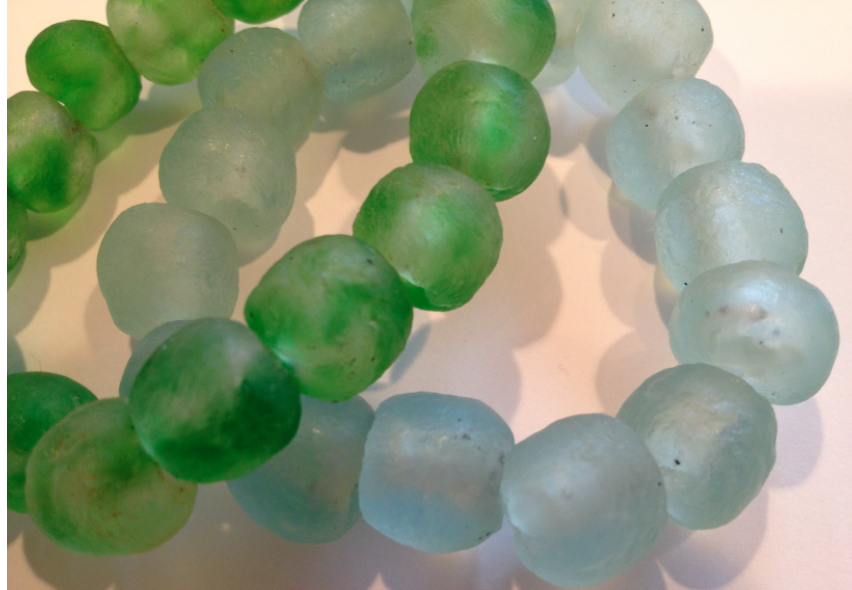
In October, several #WorldMoms attended the ONE Girls & Women AYA Summit at the Google Headquarters in Washington, DC. One of the many powerful panels we heard from was entitled Change Through Economic Opportunity, where both major fashion companies and small start-ups weighed in on how they impact the lives of women through economic empowerment. With the holiday season upon us, World Moms decided to share some of the ways we love to use our purchasing power to give back, and how you can too.
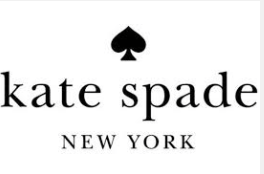
Sydney Price of Kate Spade NY spoke about the Kate Spade On Purpose line at the AYA Summit panel. Each piece in this collection is handcrafted in Rwanda creating sustainable economic opportunities for women and reshaping their community.

 Jane Mosbacher Morris , founder of To the Market, also participated in the panel on Change Through Economic Opportunity at the AYA Summit. To The Market provides a marketplace for the beautiful handcrafted goods that give women survivors of war, disaster or abuse a chance to support themselves and their families.
Jane Mosbacher Morris , founder of To the Market, also participated in the panel on Change Through Economic Opportunity at the AYA Summit. To The Market provides a marketplace for the beautiful handcrafted goods that give women survivors of war, disaster or abuse a chance to support themselves and their families.

 World Moms Elizabeth Atalay and Nicole Melancon had the pleasure of visiting the FashionABLE factory in Ethiopia this past summer and we have all been writing about and wearing the gorgeous scarves made in Ethiopia for years. It was great to finally meet founder Barrett Ward at the AYA Summit this past fall where he participated on the panel as well. FashionABLE is now expanding operations to include products made in Kenya and a beautiful line of leather products, all while providing social service programs of health care, education in a trade, and assistance with child care for their artisans to help them build better lives for themselves and their families.
World Moms Elizabeth Atalay and Nicole Melancon had the pleasure of visiting the FashionABLE factory in Ethiopia this past summer and we have all been writing about and wearing the gorgeous scarves made in Ethiopia for years. It was great to finally meet founder Barrett Ward at the AYA Summit this past fall where he participated on the panel as well. FashionABLE is now expanding operations to include products made in Kenya and a beautiful line of leather products, all while providing social service programs of health care, education in a trade, and assistance with child care for their artisans to help them build better lives for themselves and their families.
“Through your purchase, you are ABLE to provide opportunity, and a woman is ABLE to have a new choice.”-LiveFashionABLE
The Giving Keys provides jobs for those transitioning out of homelessness, giving them the opportunity to rebuild their lives. The necklaces & bracelets are super cool as is the message of the Giving Keys:
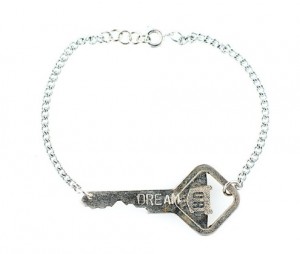
“When you get this Key, you must give it away at some point to a person you feel needs the message, then write us the story of why you gave it away. We employ those looking to transition out of homelessness.” -The Giving Keys
You can read Giving Keys stories of those who have given and received keys on their site.
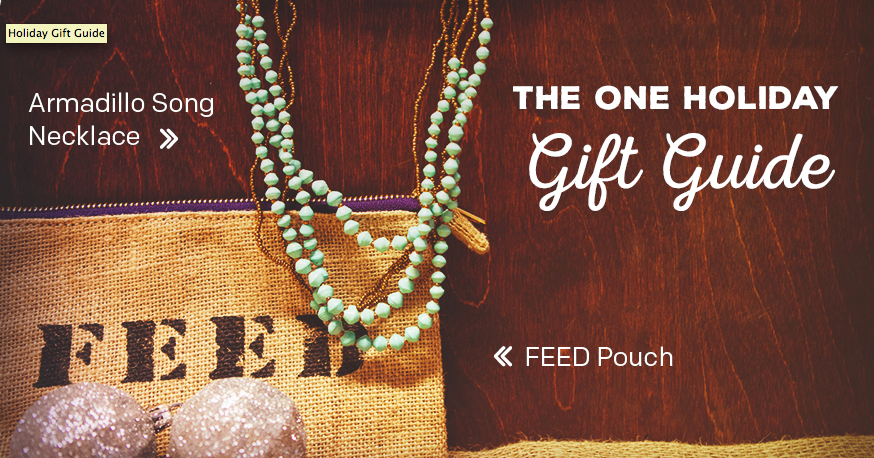
Shop the ONE Campaign store Holiday Gift Guide for some fabulous items where you know everything is fair trade and ethically sourced. By doing so you support the ONE Campaign in it’s goal of eradicating extreme poverty.
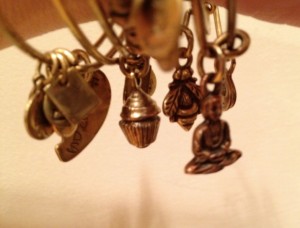
Alex & Ani Bracelets
Alex & Ani Charity by design products are another of our favorites. A percentage o profits goes back to designated non-profits. Their products are made in the USA from recycled materials, and spread the message of positive energy! They have branched out from bangles to key chains, and candles, wine charms & more!
From South Africa, The Mielie bags employ women of the townships in South Africa.
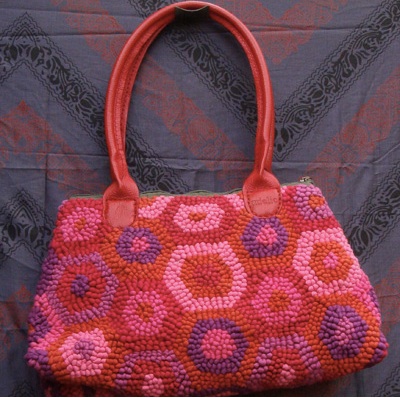
Mielie Bag Made in South Africa
Our mission is to design and produce innovative, export-quality hand-crafted products using reclaimed materials – with the aim of creating employment and restoring dignity and financial independence to South Africans.- Mielie
The Anchal Project Mission merges design, business, and education to empower marginalized and exploited women living in India. Their scarves are gorgeous and the company was founded by two Rhode Island School of design Grads.
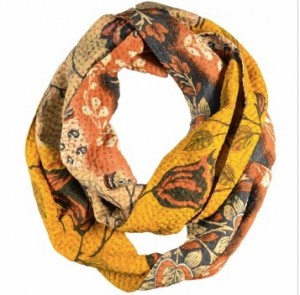
Anchal Scarf
Anchal is an Indian word that means shelter, or refers to the edge of a woman’s Sari used to provide comfort and protection for loved ones.-Anchal Project
Kids Books from Little Pickle Press, a B Corporation, are some of our favorite books for kids!

Lollie Beads Bracelets are created from fair trade recycled glass beads made in Uganda. So they are not only gorgeous (the glass beads look and feel like sea glass) but they are good for the environment AND help support sustainable living in a developing country.
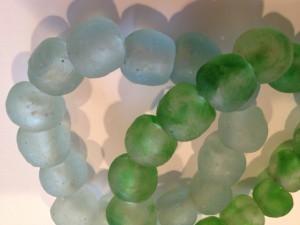
 Tom’s keeps its designs fresh while still managing to provide shoes and glasses to those who need them. We love their One for One business model (and pledge to support it with as many shoes as we can get away with!)
Tom’s keeps its designs fresh while still managing to provide shoes and glasses to those who need them. We love their One for One business model (and pledge to support it with as many shoes as we can get away with!)
 1000 Shillings Ugandan Paper bead necklaces. The women artisans earn capital for their own small businesses by making limited-edition products for 1000 Shillings. Each product sold through 1000 Shillings helps a woman establish a small business, which enables her to support her family. They also aim to tell the in-depth story behind each artisan. The company works with six single mothers in the Namatala slum, Uganda.
1000 Shillings Ugandan Paper bead necklaces. The women artisans earn capital for their own small businesses by making limited-edition products for 1000 Shillings. Each product sold through 1000 Shillings helps a woman establish a small business, which enables her to support her family. They also aim to tell the in-depth story behind each artisan. The company works with six single mothers in the Namatala slum, Uganda.
A Gift As A Gesture:
Sometimes it is hard to find the perfect gift for someone who has every material thing they desire. Still you want to give something as a token of your appreciation to them and the below gifts are the perfect solution that everyone can feel good about.
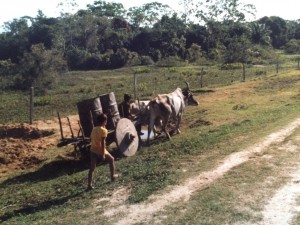
Photo by Elizabeth Atalay
Heifer International :
“Heifer International’s mission is to work with communities to end hunger and poverty and care for the Earth. It all started with a cow. Moved by the plight of orphans and refugees of the Spanish Civil War as he ladled out meager rations of powdered milk, Dan West, an Indiana farmer, volunteer relief worker and Church of the Brethren member, grasped that the people needed “a cow, not a cup”—cows that could produce milk so families would not have to depend on temporary aid. From that simple idea, Heifer International was born.” – From the Heifer International Website
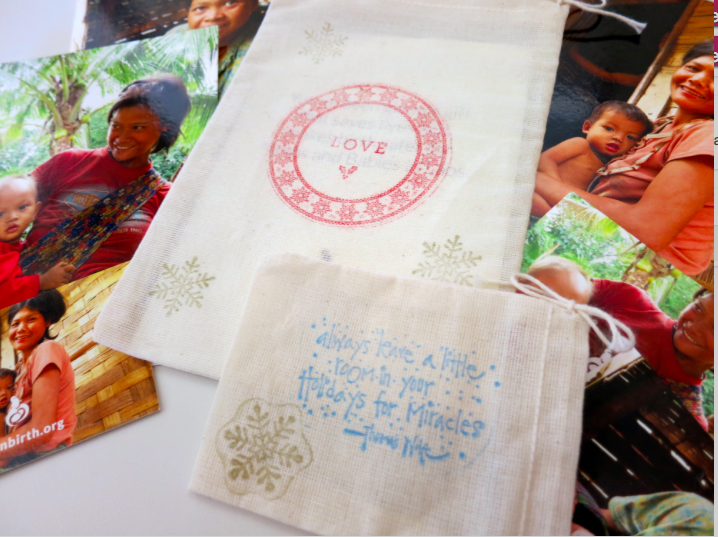 Save two lives, those of a mom and her newborn baby, with CleanBirth.org and the perfect holiday gift of Bags of Love and Miracles, a handmade bag with a beautiful full-sized honor card inside ($20) and 4 mothers in Laos will receive birthing supplies and safe birthing education.
Save two lives, those of a mom and her newborn baby, with CleanBirth.org and the perfect holiday gift of Bags of Love and Miracles, a handmade bag with a beautiful full-sized honor card inside ($20) and 4 mothers in Laos will receive birthing supplies and safe birthing education.
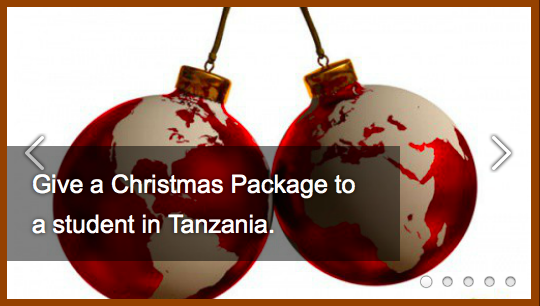
Mom2Mom Africa is a Canadian Not-for-Profit Organization, established to help empower women and children through education. The benefits of education and global awareness apply to us all. Your gifts this season will help to buy books, school uniforms and school supplies for the Mom2Mom Africa students in Tanzania.
Wishing Happy Holidays to You All,
May You Give As Good As You Get!
Do you know other organizations or shops that belong on this list?

Elizabeth Atalay is a Digital Media Producer, Managing Editor at World Moms Network, and a Social Media Manager. She was a 2015 United Nations Foundation Social Good Fellow, and traveled to Ethiopia as an International Reporting Project New Media Fellow to report on newborn health in 2014. On her personal blog, Documama.org, she uses digital media as a new medium for her background as a documentarian. After having worked on Feature Films and Television series for FOX, NBC, MGM, Columbia Pictures, Warner Brothers, 20th Century Fox, and Castle Rock Pictures, she studied documentary filmmaking and anthropology earning a Masters degree in Media Studies from The New School in New York. Since becoming a Digital Media Producer she has worked on social media campaigns for non-profits such as Save The Children, WaterAid, ONE.org, UNICEF, United Nations Foundation, Edesia, World Pulse, American Heart Association, and The Gates Foundation. Her writing has also been featured on ONE.org, Johnson & Johnson’s BabyCenter.com, EnoughProject.org, GaviAlliance.org, and Worldmomsnetwork.com. Elizabeth has traveled to 70 countries around the world, most recently to Haiti with Artisan Business Network to visit artisans in partnership with Macy’s Heart of Haiti line, which provides sustainable income to Haitian artisans. Elizabeth lives in New England with her husband and four children.
More Posts

by Maryanne W. Waweru | Jul 3, 2014 | 2014, Kenya, World Interviews

Where in the world do you live? And, are you from there?
I am in Kenya, East Africa. I live in the capital city of Nairobi. This is my home country, and I have lived here all my life.
What language(s) do you speak?
I communicate in fluent English and Swahili, which is our national language.
When did you first become a mother?
I first became a mother in April 2011 when I had my first son. I became a mother for the second time in April 2013 with the birth of my second son.
Are you a stay-at-home mom or do you do other work inside or outside the home?
I work as a freelance journalist, so most of the time I work from home.
Why do you blog/write?
I blog because I have a passion for informing and educating people (hence my journalism work). I specifically blog about motherhood because there is so much information that we moms could do with. Especially, because there is no manual to motherhood, you just learn things along the way. So why not learn together and from each other?
How would you say that you are different from other mothers?
I really can’t say I am different from other mothers, as I see that we all go through the same challenges and have the same desire to give the best to our children. I can only say that I am extremely passionate about ensuring that our experiences and our learning moments as mothers are captured somewhere. I try to capture these moments on my blog.
What do you view as the challenges of raising a child in today’s world?
For me it has got to be the fact that we are living in a very individualistic world, especially we who live in urban areas. Long ago, it was the entire village that would raise a child, but nowadays children are raised by their parents alone (and some are raised solely by the nannies as parents are too busy with work). When I was growing up, I knew all the homesteads within a 10 km radius, and could name all members of each household.
But that is not the same nowadays, where even knowing your next door neighbour is too much work! Society is so busy, with technology (computers, cell phones, video games) lessening the interaction of both parents and children. I fear my sons may never enjoy what ‘communal parenting’ is like.
How did you find World Moms Blog?
On twitter!
This is an original post to World Moms Blog by Maryanne W. Waweru of Mummy Tales.
Photo credit to the author.
Maryanne W. Waweru, a mother of two boys, writes for a living. She lives in Nairobi, Kenya with her family. Maryanne, a Christian who is passionate about telling stories, hopes blogging will be a good way for her to engage in her foremost passion as she spreads the message of hope and faith through her own experiences and those of other women, children, mums and dads. She can be found at Mummy Tales.
More Posts - Website
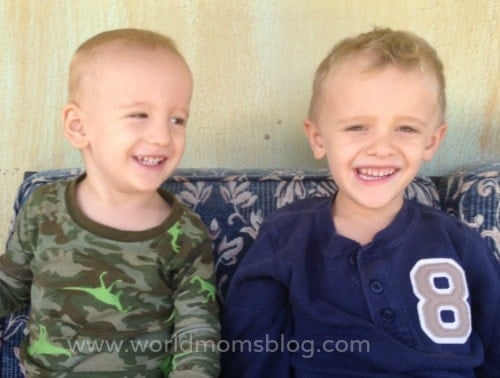
by Mama Mzungu (Kenya) | Jan 8, 2014 | 2014, Brothers, Kenya, Kids, Milestones, Motherhood, Parenting, World Moms Blog, World Motherhood

As a new mother, I felt disoriented a lot, I imagine like most of you. I mean, who was this wondrous little creature, equal parts mom and dad and maybe bit of a wayward uncle somewhere in there.
New babies are all instinct, nervous system and an unrelenting digestive system. We, the new moms, eagerly search for any hint of their uniqueness – anything that separates them from other babies and helps us learn about the little emerging person they are. Are they independent or clingy? A giggler or more serious? An old soul or a new one (if you’re so inclined to think that way)?
And with every expression of something new – a proclivity or an interest or an emotion – I wondered: Is this just typical baby stuff or is it an expression of his unique Caleb-ness. We found it incredible how much he responded to music and loved to kick around balls with a deftness that seemed beyond his babyhood. We harbored fantasies related to orchestral and athletic prowess. But, really, wasn’t this stuff universal? Don’t all babies love music and playing with orb-shaped objects?
That was the root of my disorientation: which of this stuff was the embodiment of babyhood and which was the embodiment of this particular baby? In this one way (and ONLY in that way) I was a bit envious of a friend who had fraternal twins. At each developmental stage their uniqueness was obvious. Susie was the shy one who loved to snuggle and Jack was the independent one who never wanted to sleep.
With an only child there is simply no point of comparison. A first born defines what a baby is. It’s a tall order for such a little guy.
Now here I am with my second boy in my arms. And everything he does is inevitably compares to his brother. He talks later, clings more, sleeps worse, snuggles more, fears strangers more etc… THAN his brother. His teeth came in closer together, his fingers are longer, he loves animals more, is less interested in television shows and wants to be carried more THAN his brother. You’d think I’d finally be relieved by being able to know my baby in comparison to some precedent.
But instead of providing a touchstone to better understand my baby, I find myself wondering if these comparisons are fair to the little guy. It’s as if I can’t understand him outside of his relation to his brother. Somehow, now that I have a frame of reference, I find myself doing the inevitable human thing of sorting and comparing. Sometimes it provides a useful orientation, and sometimes I wonder if it prevents me from fully seeing my baby.
I love those boys more than I thought possible. I feel more protective of and endeared to them than anyone else on the planet. And cliché as it is, that love grows every day. That love defies an intellectual “understanding” of who each one is as person. But, knowing your child is the color within the thickly etched lines of that raw human love. I want to see those colors as clearly as possible.
What do you other mamas think of this? Do you have trouble truly “seeing” your kids not in relation to their siblings? Does it even matter?
This is an original post to World Moms Blog by our writer in Kenya, Mama Mzungu, who writes at www.mamamzungu.com .
Photo credit to the author.
Originally from Chicago, Kim has dabbled in world travel through her 20s and is finally realizing her dream of living and working in Western Kenya with her husband and two small boys, Caleb and Emmet. She writes about tension of looking at what the family left in the US and feeling like they live a relatively simple life, and then looking at their neighbors and feeling embarrassed by their riches. She writes about clumsily navigating the inevitable cultural differences and learning every day that we share more than we don’t. Come visit her at Mama Mzungu.
More Posts - Website
Follow Me:


by Elizabeth Atalay | Oct 1, 2013 | 2013, Education, Eye on Culture, Hobby, Humanitarian, Kenya, Media, Social Good, World Moms Blog
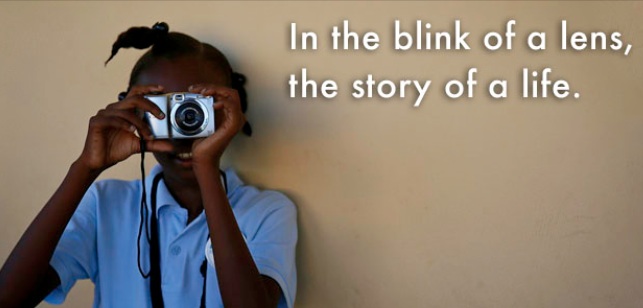
The Founder of the View Finder Workshop describes her inspiration:
“I WAS WALKING THROUGH CITÉ SOLEIL, the largest slum in the Western Hemisphere located in Haiti, one of the poorest places on Earth. Trash littered the streets and dirty stagnant rainwater was often used as latrines. The sun pulsated directly overhead, bleaching the blue sky to a blinding white. Sweat droplets raced down my spine and pooled at my lower back. Children dressed in rags – or for some, in nothing at all – played a spirited game of soccer with a half-inflated ball. I snapped a picture of a group of rambunctious kids, only to have eager young hands grab at my camera to see the image captured on my screen.
The novelty of the reproduction faded and most darted off between the shanty houses. One remained, diligently pointing at each face on the screen, as if ticking them off in his head. He stopped at the last one. His own. He let out a burst of pure, innocent, giggling glee and scampered off. Alone, I realized that for people who have next to nothing, a mirror is an unattainable luxury. This child only met his reflection by process of elimination. For he knew which ones were his friends and which one was the stranger.
I was struck dumb. For I never realized a person could walk through life without knowing his own physical self. But photography can change that. It lets a child see himself & his world through different eyes. By learning tangible skills & creating new avenues of self-expression, he can contribute to his life & his community.
And thus, the seed for View Finder Workshop was planted.”
Babita Patel.
founder, humanitarian photographer – Excerpted from the View Finder website
From that moment View Finder Workshops were born. They were born to put the camera into the hands of children who have never had a lens through which to objectively view or portray the world in which they live. Children love taking photographs, and especially love taking, and seeing photos of themselves. These are not children growing up in a “selfie” obsessed culture, but kids who may not have ever even seen a mirror image of themselves. To put a camera in their hands proves liberating and empowering in a way that is hard to imagine, until you witness the pure joy on their faces when they see the images that they capture.
Photography as a visual medium provides a creative expression and ability to both view, and share a perspective from each child’s personal lens. And there is nothing like viewing the world through the eyes of a child.
The results of last January’s workshop in Haiti in collaboration with Respire Haiti, brought fresh views to the children of Gressier, Haiti who had been serving as restaveks (children enslaved as domestic servants), orphans & other vulnerable children. The images captured were often stark and beautiful. The photos were then exhibited in September in an LA gallery show in Santa Monica where gallery patrons were able to view the results of what the children were able to capture with a camera in their hands. A few of the kid’s prints even sold!
Next the Viewfinder Workshop is gearing up for a workshop in Kenya This fall, where they will be introducing photography to 40 students enrolled at their new school in the Lenana slum, in the country’s capital, in a program that they hope to make a sustainable curiculum. These programs need support to become sustainable, and this is where you can come in. You can like View Finder on Facebook , follow on Twitter , and/or make a donation to help other children to tell their story through images. You may just be the one to benefit from the enchanting worlds they share.
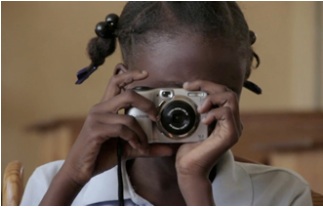
Have you ever put the camera in your own kids hands to see what they come up with?
This is an original post written for World Moms Blog by Elizabeth Atalay of documama.org.
*All photos credited to the View Finder Workshop website.

Elizabeth Atalay is a Digital Media Producer, Managing Editor at World Moms Network, and a Social Media Manager. She was a 2015 United Nations Foundation Social Good Fellow, and traveled to Ethiopia as an International Reporting Project New Media Fellow to report on newborn health in 2014. On her personal blog, Documama.org, she uses digital media as a new medium for her background as a documentarian. After having worked on Feature Films and Television series for FOX, NBC, MGM, Columbia Pictures, Warner Brothers, 20th Century Fox, and Castle Rock Pictures, she studied documentary filmmaking and anthropology earning a Masters degree in Media Studies from The New School in New York. Since becoming a Digital Media Producer she has worked on social media campaigns for non-profits such as Save The Children, WaterAid, ONE.org, UNICEF, United Nations Foundation, Edesia, World Pulse, American Heart Association, and The Gates Foundation. Her writing has also been featured on ONE.org, Johnson & Johnson’s BabyCenter.com, EnoughProject.org, GaviAlliance.org, and Worldmomsnetwork.com. Elizabeth has traveled to 70 countries around the world, most recently to Haiti with Artisan Business Network to visit artisans in partnership with Macy’s Heart of Haiti line, which provides sustainable income to Haitian artisans. Elizabeth lives in New England with her husband and four children.
More Posts

 Exclusive breastfeeding. Before I became a mother, I had never heard of it. I knew about breastfeeding, obviously, but not until I was seven months pregnant with my first child, did I learn it was possible to feed a baby only breastmilk for six months.
Exclusive breastfeeding. Before I became a mother, I had never heard of it. I knew about breastfeeding, obviously, but not until I was seven months pregnant with my first child, did I learn it was possible to feed a baby only breastmilk for six months.
























 Save two lives, those of a mom and her newborn baby, with
Save two lives, those of a mom and her newborn baby, with 







